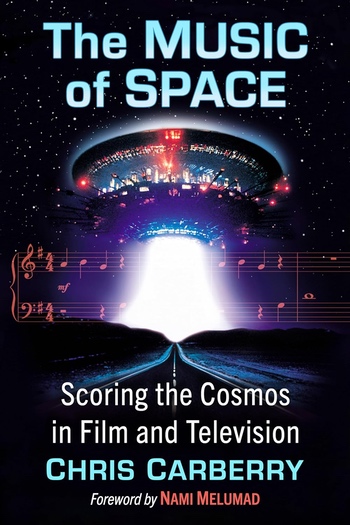Review: The Music of Spaceby Jeff Foust
|
| “Music has the capacity to capture and articulate the human experience and emotions more than can be expressed in words,” Carberry writes in the conclusion of the book. |
Most of the book is a thorough history of music used in movies and television shows related to space, from the early silent movies with musicians providing accompaniment (music that, in many cases, has been lost) to ever-growing array of films and shows on streaming services. Two of the biggest space-related franchises, Star Trek and Star Wars, get dedicated chapters examining the music produced for the movies and series over the decades, but the book also covers many others made during those eras.
The book includes many familiar names among soundtrack composers, like Jerry Goldsmith, James Horner, and John Williams (who, the book notes, was credited as “Johnny Williams” in his first sci-fi soundtrack work, the original “Lost in Space” TV series, to deconflict with a British actor of the same name.) There are many other composers also mentioned in the book, many of whom were interviewed for it.
The book, near the end, turns to what it calls “real” space, or music linked to actual spaceflight. The first music performed in space, Carberry states, was by Soviet cosmonaut Pavel Popovich, who sang a Ukrainian song on Vostok 4 in 1962 at the request of fellow Ukrainian Sergei Korolev. Astronauts and cosmonauts have since flown and played a variety of musical instruments in space, with Chris Hadfield famously performing “Space Oddity” while Cady Coleman played the flute in a space-terrestrial duet with Jethro Tull’s Ian Anderson. That meant adapting to the challenges of microgravity: Coleman said that caused the flute to bobble, while Hadfield reported it easier to hit higher notes, but harder to reach lower ones, when singing.
“Music has the capacity to capture and articulate the human experience and emotions more than can be expressed in words,” Carberry writes in the conclusion of The Music of Space. That includes space-related film and movie soundtracks, which he notes can make good shows great and passable ones more entertaining entertaining. They can also be inspirational, fueling those who want to beyond fictional worlds to real spaceflight—and maybe play a tune while in space.
Note: we are now moderating comments. There will be a delay in posting comments and no guarantee that all submitted comments will be posted.
